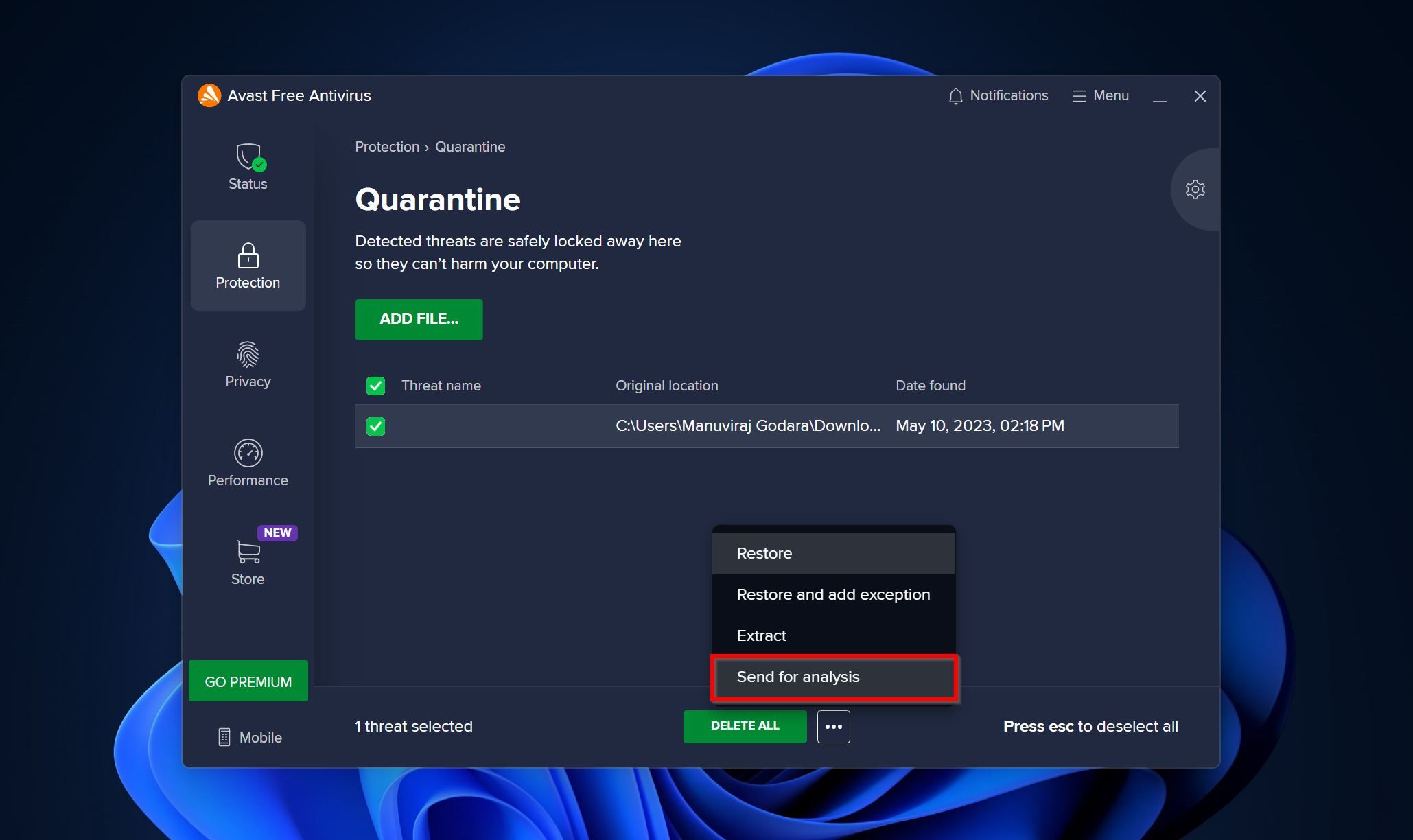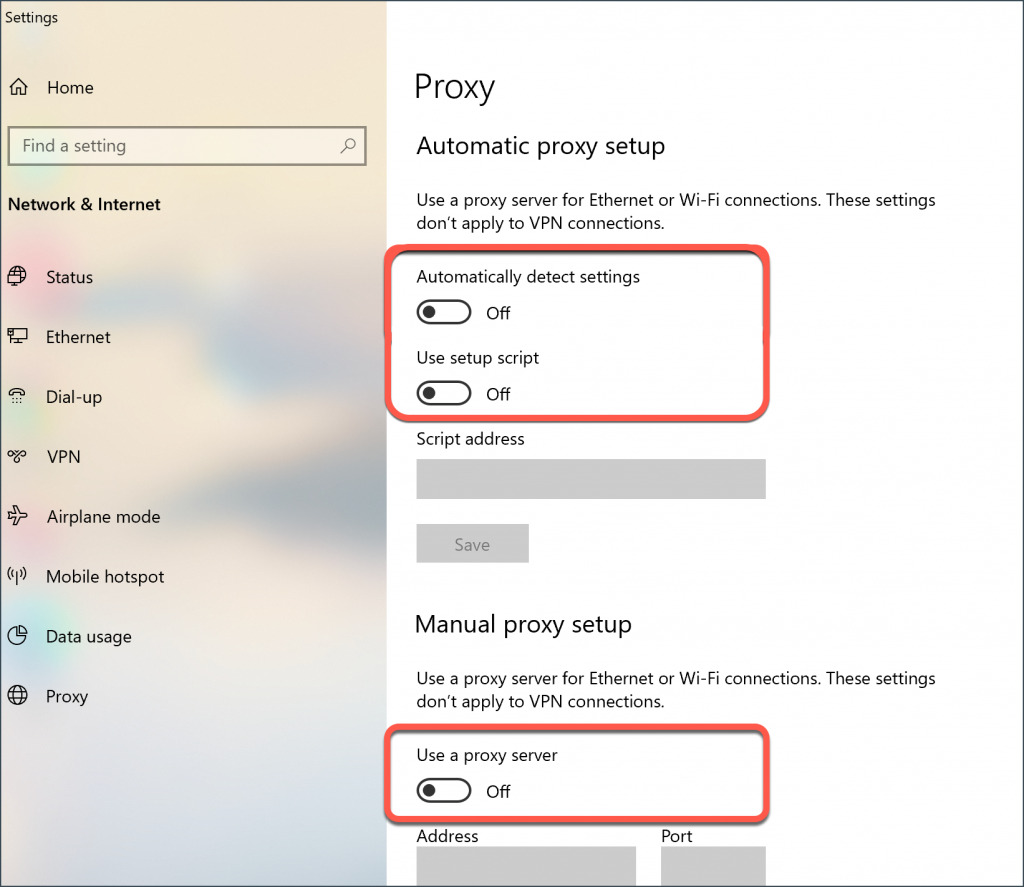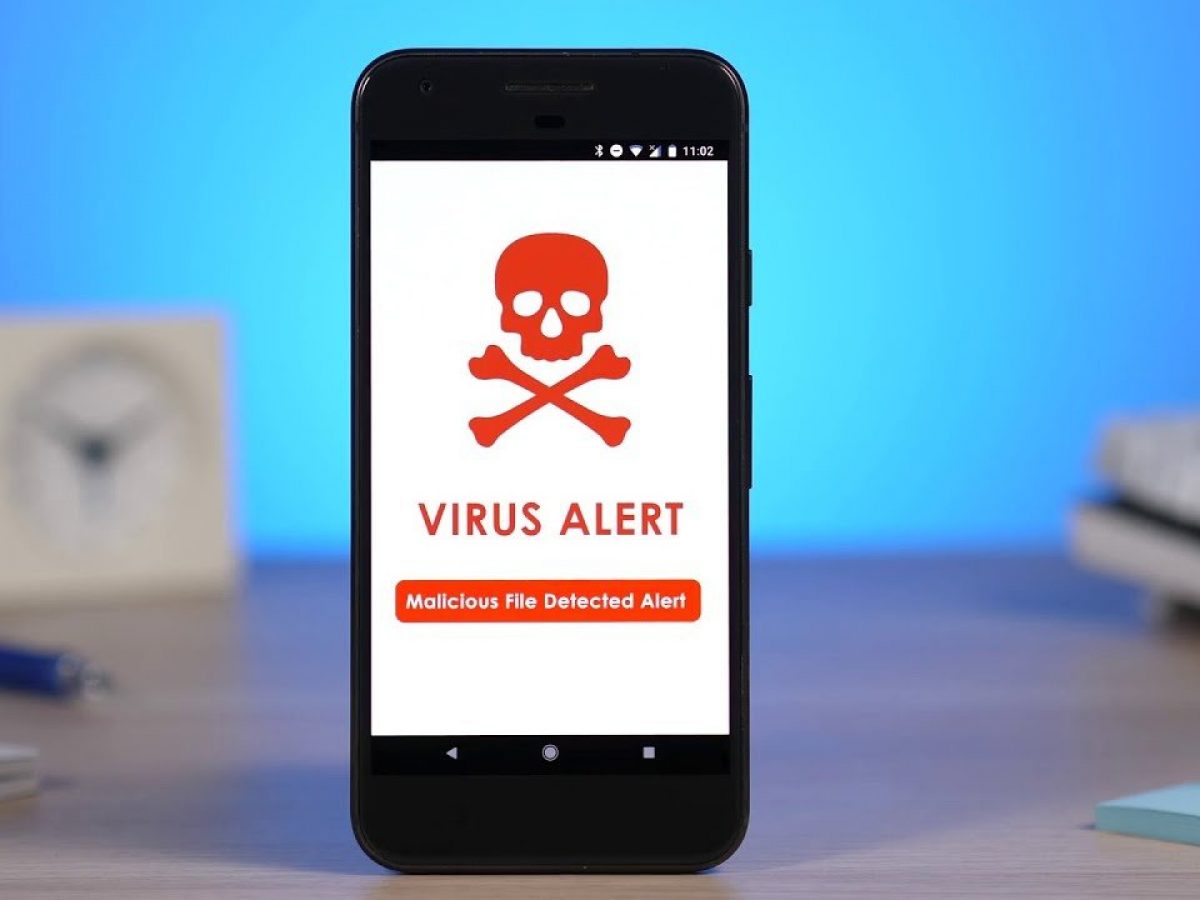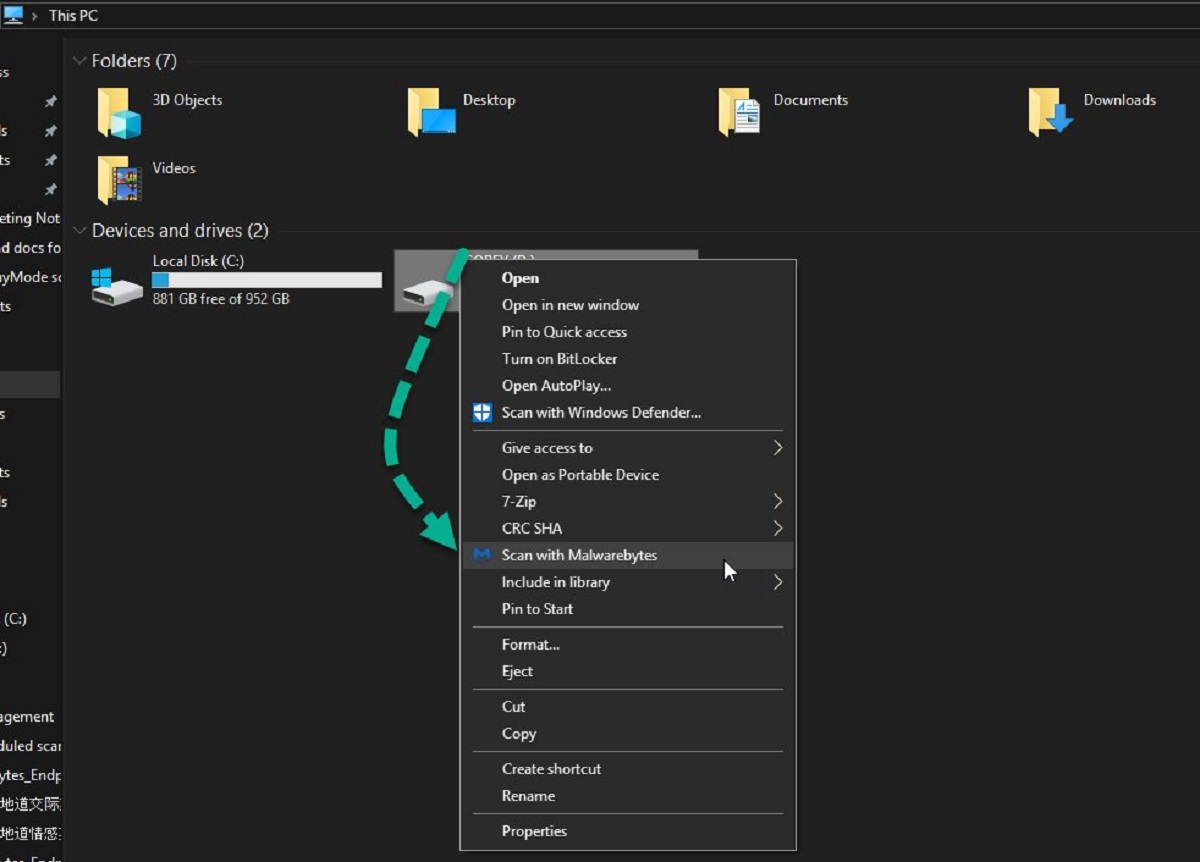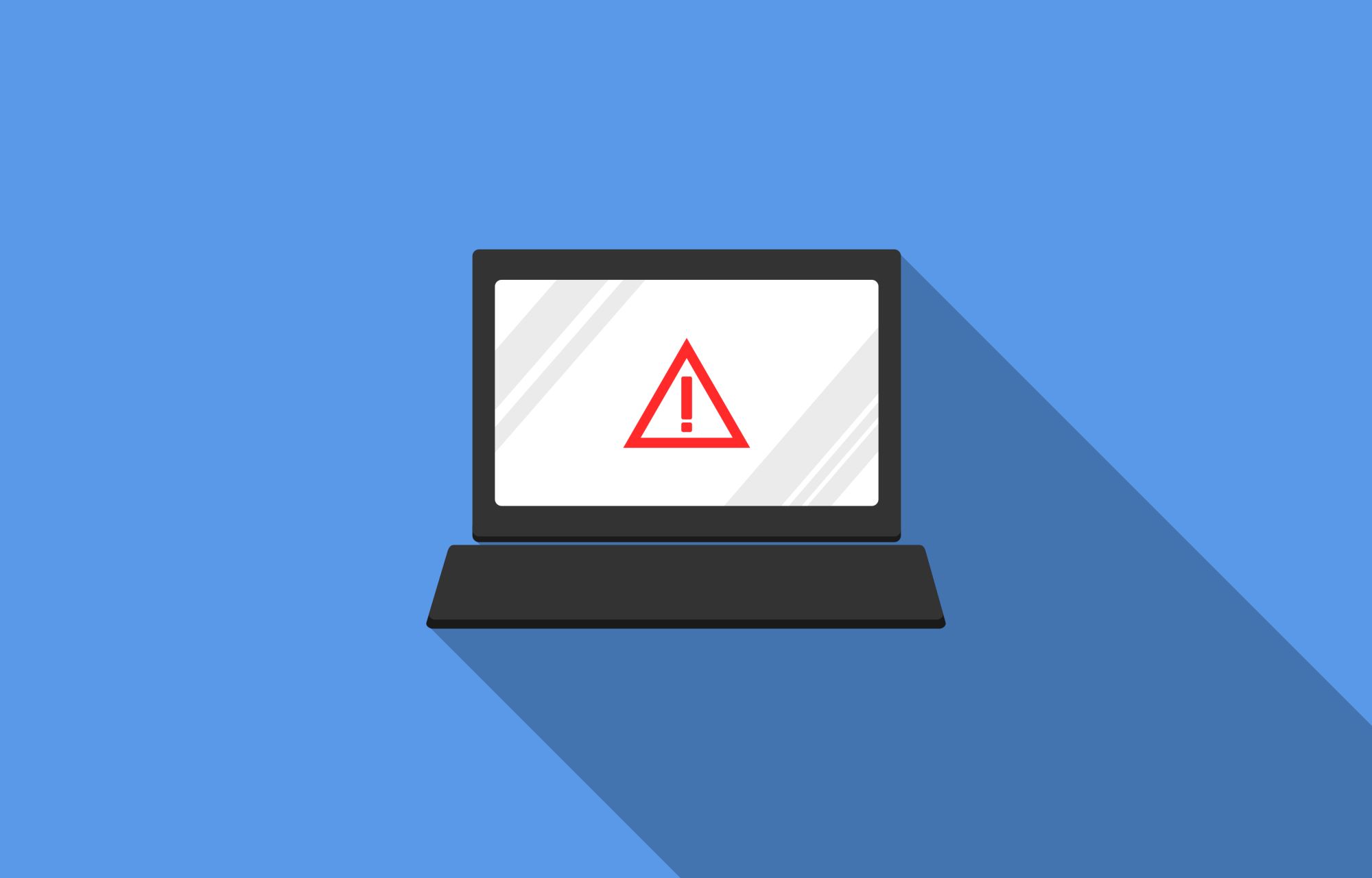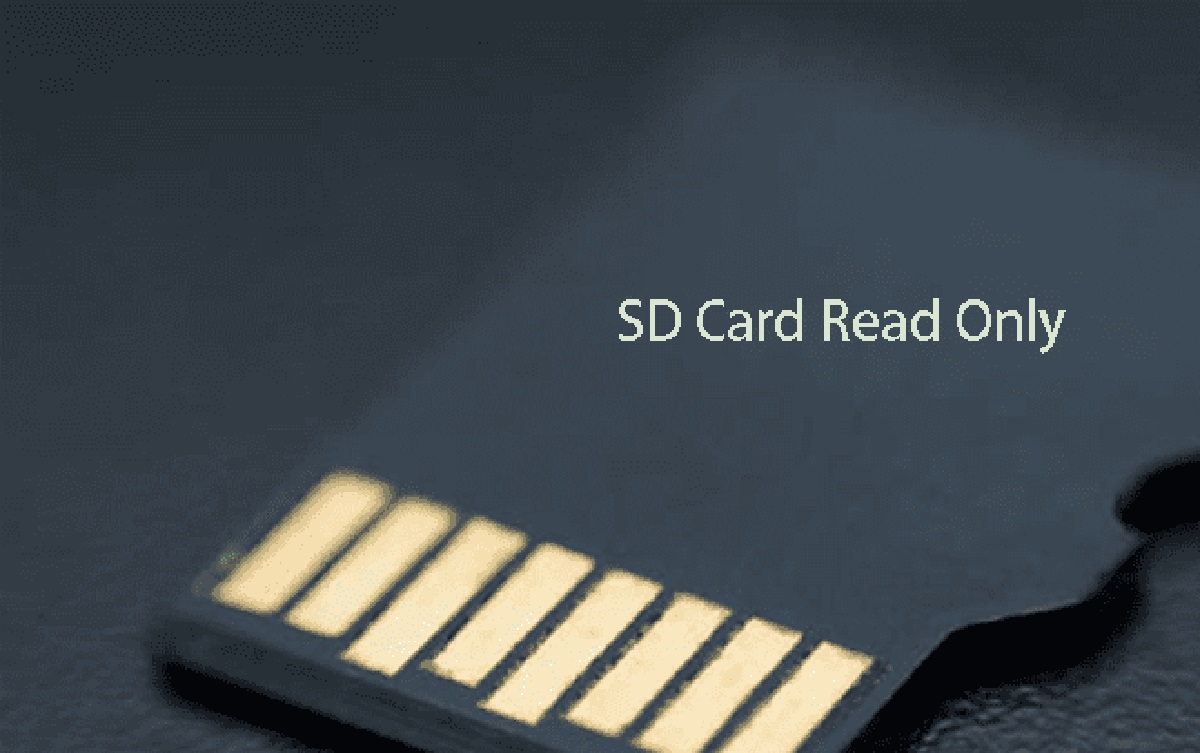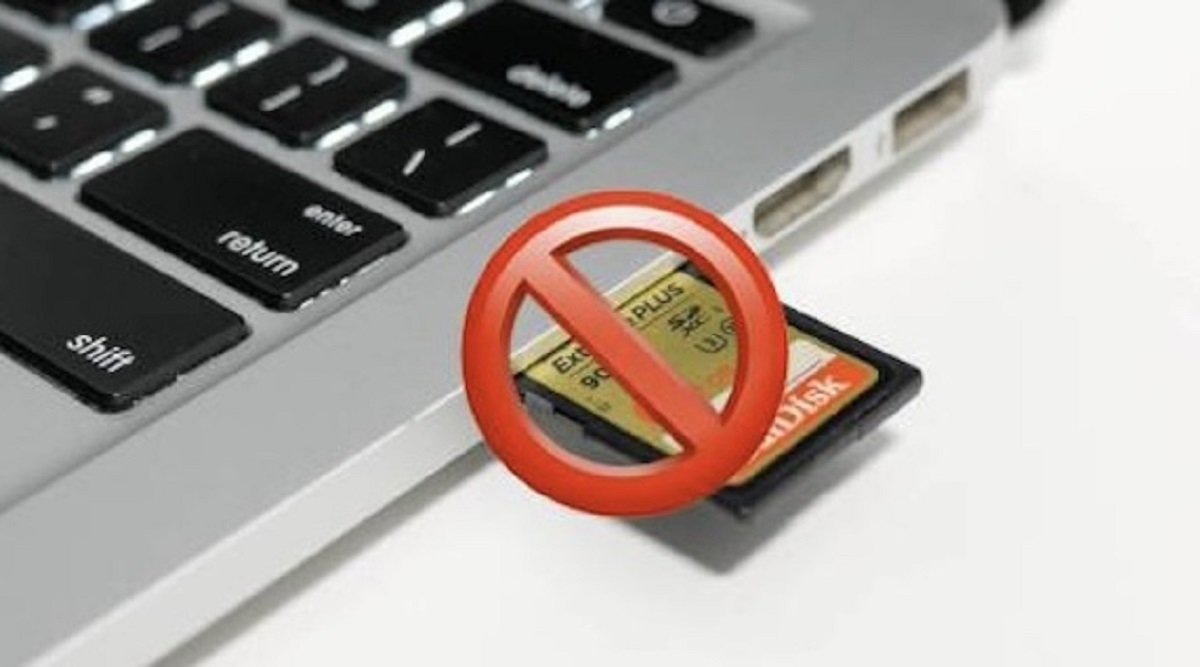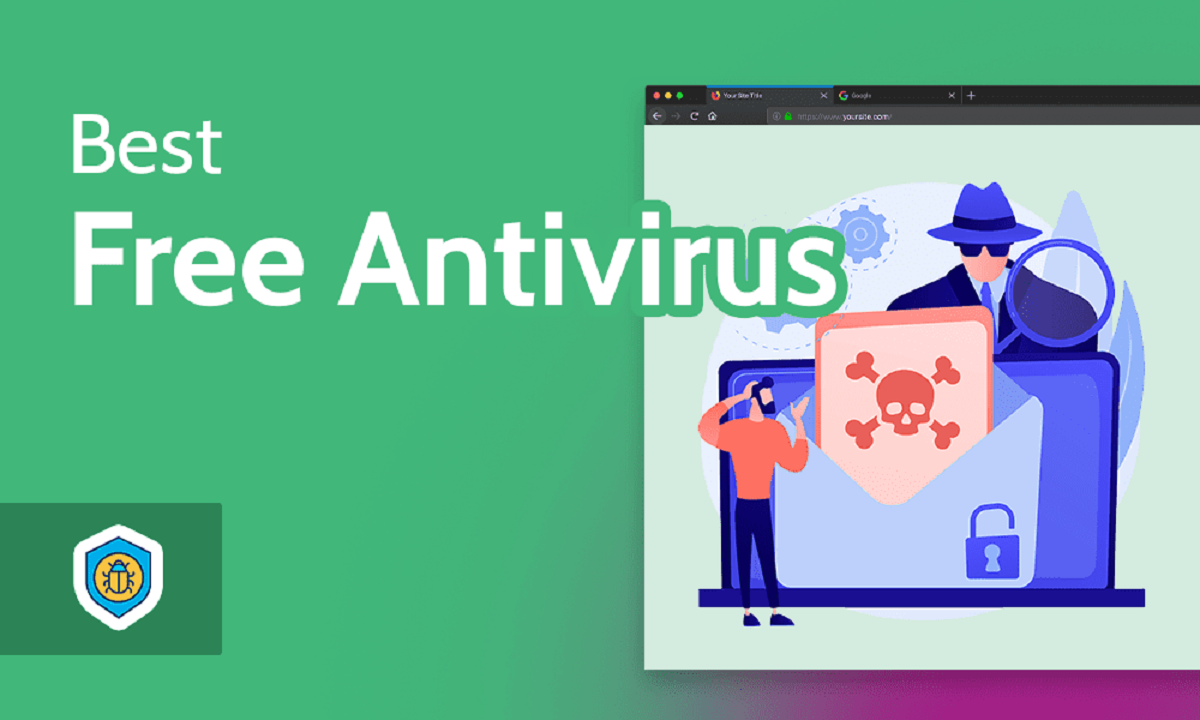Introduction
Welcome to the digital age, where our lives revolve around computers and the internet. However, with the convenience and connectivity that technology brings, also comes the risk of malicious software infecting our systems. Viruses, as they are commonly referred to, can cause severe damage to our computers, leading to data loss, system crashes, and even identity theft.
The common solution to combating viruses is by using antivirus software. These programs are specifically designed to detect and remove malicious software, keeping our systems safe and secure. However, what if you find yourself in a situation where your computer is infected with a virus, and you don’t have access to an antivirus software? Is there a way to delete the virus without using an antivirus?
This article aims to explore the possibility of removing a virus from your computer without the aid of antivirus software. While it is highly recommended to use reliable antivirus programs, there may be situations where immediate access to such software is not available. Therefore, understanding alternative methods to combat viruses can be beneficial in certain circumstances.
Before we delve into the manual deletion method, it is important to note that preventing virus infections is always the best approach. Regularly updating your operating system, installing security patches, and practicing safe browsing habits can go a long way in reducing the risk of virus infections. However, if you find yourself in a situation where your computer is already infected, stay calm and continue reading as we explore the steps to manually remove the virus from your system.
Understanding Viruses
Before we dive into the process of virus removal, it is crucial to have a basic understanding of what viruses are and how they operate. Viruses are malicious software programs that are designed to replicate and spread from one computer to another, often causing harm along the way. They can infect files, corrupt data, and even steal personal information.
Viruses come in various forms and can be classified into different categories based on their behavior and characteristics. Some common types of viruses include:
- File Infectors: These viruses attach themselves to executable files and spread when these files are executed.
- Boot Sector Viruses: These viruses infect the boot sector of a computer’s hard drive, making them active when the computer starts.
- Macro Viruses: Primarily targeting productivity software like Microsoft Office, macro viruses infect the macros within documents and spreadsheets.
- Worms: Worms are standalone programs that replicate themselves and spread across networks without the need for users to execute any files.
- Trojans: Trojans disguise themselves as legitimate software or files and trick users into executing them, often leading to unauthorized access to the system.
- Ransomware: Ransomware encrypts files on a computer and demands a ransom payment in exchange for the decryption key.
Understanding the type of virus infecting your computer can help in choosing the most effective removal method. Additionally, being aware of the symptoms associated with a virus infection can prompt early detection and intervention.
It is important to note that viruses can enter your system through various means, such as visiting infected websites, downloading malicious attachments, or even connecting infected external devices. Therefore, practicing safe browsing habits and exercising caution when interacting with unknown files or sources is essential to prevent virus infections.
Now that we have a basic understanding of viruses, let’s move on to the next section, where we will discuss the common symptoms of a virus infection.
Symptoms of a Virus Infection
Identifying the symptoms of a virus infection is crucial in determining whether your computer has been compromised. While the specific symptoms may vary depending on the type of virus, there are common indicators that can signal the presence of a virus on your system.
Here are some of the most common symptoms of a virus infection:
- Slow Performance: If your computer suddenly becomes sluggish, with programs taking longer to load and respond, it could be a sign of a virus. Viruses can consume system resources, causing your computer to run significantly slower than usual.
- Unusual Pop-ups and Ads: If you start seeing an influx of pop-up ads or unexpected browser redirects, it may be indicative of a virus infection. These malicious programs can inject unwanted advertisements into your browser or redirect your internet searches to suspicious websites.
- System Crashes: Frequent system crashes, blue screens of death (BSOD), or sudden reboots can be symptoms of a virus infection. Viruses can interfere with the stability of your operating system, leading to unexpected crashes and system failures.
- Unexplained Network Activity: If you notice unusually high network activity or data usage, even when you’re not actively using the internet, it could be a sign of a virus. Some viruses spread by infecting other computers on the network, causing increased network traffic.
- Missing or Altered Files: A virus may delete, modify, or encrypt your files without your consent. If you find that important files have gone missing, or if you notice unusual file extensions, it could be an indication of a virus.
- Disabled Antivirus or Firewall: Viruses often target security software to disable their functionality, making it easier for them to operate undetected. If you discover that your antivirus or firewall has been unexpectedly disabled or is unable to update, it may be compromised by a virus.
It is important to remember that these symptoms can also be caused by other factors, such as hardware issues or software conflicts. However, if you experience multiple symptoms simultaneously, it is advisable to investigate the possibility of a virus infection.
In the next section, we will discuss why you might consider deleting a virus without using an antivirus software.
Why You Might Consider Deleting a Virus Without an Antivirus
Using antivirus software is the recommended and most effective way to combat viruses. However, there may be certain situations where you might consider deleting a virus without relying on antivirus software. Let’s explore some scenarios where this approach may be necessary:
- No Access to Antivirus Software: In some cases, you may not have immediate access to antivirus software. This could be due to various reasons, such as being in a remote location without internet connectivity or experiencing technical difficulties that prevent you from installing or updating the software. In such instances, knowing how to manually remove a virus can be helpful in mitigating the damage caused by the infection.
- Outdated or Ineffective Antivirus: Not all antivirus software is created equal. If you are using an outdated or ineffective antivirus program, it may fail to detect and remove certain types of viruses. In such cases, employing manual virus removal techniques can offer an alternative solution to rid your computer of the infection.
- Complex or Highly Resistant Viruses: Some viruses are designed to be highly resistant to antivirus software, making it challenging for traditional scanning and removal methods to eradicate them completely. Manual virus removal techniques, coupled with a deep understanding of the specific virus’s behavior and characteristics, can provide a more targeted and effective approach.
- Learning Experience: For the tech-savvy individuals who enjoy delving into the inner workings of computers, manually removing a virus can serve as a learning experience. It can deepen your understanding of how viruses operate, enhance your troubleshooting skills, and equip you with invaluable knowledge for future encounters with viruses.
While the mentioned scenarios may necessitate manual virus removal, it is crucial to exercise caution and be aware of the potential risks involved. Manually removing viruses requires technical expertise and carries the risk of inadvertently deleting critical system files or worsening the infection. Therefore, if you have access to reliable antivirus software, it is still recommended to use it as the primary method of virus removal.
In the next section, we will explore important precautions to take before attempting to remove viruses manually.
Precautions to Take Before Attempting to Remove Viruses
Before diving into the manual virus removal process, it is essential to take certain precautions to ensure the safety of your computer and data:
- Disconnect from the Internet: The first step is to disconnect your computer from the internet. This will prevent the virus from potentially communicating with its command and control server, minimizing the risk of further damage or data theft.
- Backup Your Data: Create a backup of your important files and data before attempting any virus removal. This ensures that even if something goes wrong during the process, your critical information remains safe and can be restored later.
- Create a System Restore Point: Before making any changes to your system, create a system restore point. In case the manual removal process adversely affects your computer, you can revert back to a previous state using the restore point.
- Run a Secondary Scan: Perform a scan with an online antivirus scanner or a secondary antivirus tool on your computer to confirm the presence of the virus. This can help validate your suspicion and provide additional insights into the nature of the infection.
- Research the Virus: Gather information about the particular virus infecting your computer. Understanding its behavior, file locations, and potential complications can aid in a more effective removal process.
- Create a Bootable Rescue Disk: In more severe cases, where the virus actively prevents your computer from booting or hinders the running of antivirus software, creating a bootable rescue disk can be helpful. These disks contain antivirus tools and can be used to scan and remove viruses before the operating system loads.
- Prepare Necessary Tools: In addition to antivirus software, gather the necessary tools, such as a USB drive, a bootable antivirus disk, relevant malware removal tools, and a notepad to document your findings and processes during the virus removal process.
By taking these precautions, you can minimize the risk of causing further harm to your computer while attempting to remove the virus manually. Remember that manual virus removal should only be undertaken if you are confident in your technical abilities and have a good understanding of the risks involved.
In the next section, we will provide a step-by-step guide for the manual deletion method of removing viruses from your computer.
Manual Deletion Method: Step-by-Step Guide
Removing a virus manually can be a complex task and should only be attempted if you have sufficient technical knowledge and are confident in your abilities. Here is a step-by-step guide to help you navigate through the manual deletion process:
- Enter Safe Mode: Restart your computer and enter Safe Mode. This ensures that only essential system processes are running, making it easier to identify and remove malicious files without interference.
- Identify Malicious Files and Processes: Use your antivirus software or a reliable file scanning tool to identify potentially infected files. Pay attention to files with suspicious names, unfamiliar file extensions, or locations outside of typical system folders.
- Disabling Malicious Processes: Open the Task Manager (Ctrl + Shift + Esc) and look for any suspicious or unfamiliar processes. Right-click on the process and select “End Task” to terminate it. Be cautious not to terminate any essential system processes.
- Removing Malicious Files: Once you have identified the infected files, proceed with their removal. Right-click on the file and select “Delete” or move them to the Quarantine folder. Avoid deleting system files unless you are certain they are infected.
- Registry Cleaning: Use the Registry Editor (regedit) to remove any registry entries associated with the virus. Be extremely careful while editing the registry, as making incorrect changes can cause system instability. It is advisable to create a backup of the registry before making any modifications.
- System Configuration: In certain cases, viruses modify system configuration settings to gain persistence or further control over the system. Verify and restore critical system settings, such as startup entries and browser settings, to their default values.
- Post-Virus Removal Checkup: After manually deleting the virus, it is crucial to ensure that your computer is clean and secure. Perform a thorough scan with reliable antivirus software to detect any remaining traces of the virus or potential infections.
Remember, manual virus removal can be a risky process, and there is always a possibility of inadvertently causing irreparable damage to your system. Therefore, it is recommended to proceed with caution and only attempt manual deletion if you are confident in your technical skills.
In the next section, we will discuss the importance of identifying malicious files and processes during the manual virus removal process.
Identifying Malicious Files and Processes
When manually removing a virus from your computer, one crucial step is identifying the malicious files and processes associated with the infection. This step is vital as it allows you to target and eliminate the specific components that are causing harm. Here are some methods to help you identify malicious files and processes:
- Use Antivirus Software: Start by running a reliable antivirus program and performing a full system scan. The antivirus software will detect and flag any infected files or processes that are known to be associated with viruses. This can provide an initial indication of the infected components on your computer.
- Pay Attention to Unfamiliar Names or Locations: Examine your system files and folders for any files with suspicious names, unfamiliar file extensions, or locations outside of typical system directories. Viruses often disguise themselves by using names similar to legitimate files or by hiding in obscure folders.
- Check for Unusual File Properties: Right-click on a file and select “Properties” to access its properties. Look for any abnormal file properties, such as random creation or modification dates, unusual file sizes, or hidden attributes. These irregularities can indicate a potential virus infection.
- Investigate High CPU or Memory Usage: Use the Task Manager (Ctrl + Shift + Esc) to monitor the CPU and memory usage of running processes. Suspicious and malicious processes often consume a significant amount of system resources. If you notice any process with unusually high usage, it may be an indicator of a virus.
- Research Suspicious Files and Processes: If you come across files or processes that arouse suspicion, research them online. Various websites and forums provide information on known viruses, their associated files, and common symptoms. Cross-reference the suspicious components with available resources to gain further insight.
- Use Online Malware Scanners: Online malware scanners can be useful in identifying and analyzing potentially malicious files. These scanners compare files against an extensive database of known malware signatures and provide detailed reports on their threat levels. This can assist you in confirming the suspicious nature of a file or process.
It is important to note that not all unfamiliar files or processes are malicious. System files and legitimate software may have unfamiliar names or behaviors. Exercise caution when identifying and removing files or processes to prevent unintentionally deleting essential components.
Once you have identified malicious files and processes, you can proceed with disabling or terminating them as part of the manual virus removal process.
In the next section, we will discuss the steps involved in disabling malicious processes.
Disabling Malicious Processes
When manually removing a virus from your computer, one critical step is to disable or terminate the malicious processes associated with the infection. By stopping these processes, you can prevent the virus from further damaging your system and impede its ability to spread. Here are the steps involved in disabling malicious processes:
- Open the Task Manager: Access the Task Manager by pressing Ctrl + Shift + Esc or by right-clicking on the taskbar and selecting “Task Manager.” This utility provides an overview of the processes running on your computer.
- Identify Suspicious Processes: In the Task Manager, navigate to the “Processes” or “Details” tab. Look for any processes that appear suspicious, unfamiliar, or have unusually high CPU or memory usage. Pay attention to processes that have random alphanumeric names or names that don’t correspond to any known programs on your system.
- Research the Processes: If you encounter processes that arouse suspicion, research them online to gather more information. Various websites and security forums provide insights on known malware processes and their associated threats. By cross-referencing the suspicious processes with available resources, you can determine if they are malicious.
- Terminate Suspicious Processes: To disable a suspicious process, right-click on it in the Task Manager and select “End Task” or “End Process.” Confirm the action if prompted. Exercise caution when terminating processes, ensuring that you only terminate processes associated with the virus and not critical system processes.
- Disable Startup Processes: Check the “Startup” tab in the Task Manager to identify processes that launch automatically when your computer starts. Disable any suspicious or unfamiliar startup processes by right-clicking on them and selecting “Disable.” This prevents the virus from running at system startup and reduces the chances of reinfection.
- Verify Process Termination: After ending suspicious processes, monitor the Task Manager to ensure they do not restart or spawn additional instances. If a process keeps reappearing or exhibits unusual behavior after termination, it may indicate a more resilient virus or the presence of other malware components.
Remember that some malicious processes may be designed to mimic legitimate system processes or hide within legitimate program directories. Exercise caution when terminating processes, ensuring that you are targeting the correct ones associated with the virus.
Disabling malicious processes is an essential step in the manual virus removal process. By halting these processes, you can limit the virus’s impact and create a safer environment to proceed with removing infected files and cleaning your system.
In the next section, we will discuss the steps involved in removing malicious files from your computer.
Removing Malicious Files
As part of the manual virus removal process, removing the malicious files associated with the infection is crucial. By deleting these files, you can eliminate the source of the virus and prevent it from causing further harm to your computer. Here are the steps involved in removing malicious files:
- Identify Infected Files: Use reliable antivirus software or scanning tools to identify the files that are potentially infected. Look for files with suspicious names, unfamiliar file extensions, or locations outside of typical system folders. Pay attention to files that have recently been modified or created.
- Research the Files: If you come across files that raise suspicion, research them online. Numerous websites and security forums provide information on known malware files and their associated threats. By cross-referencing the suspicious files with available resources, you can determine if they are malicious.
- Make a Backup: Before deleting any files, it is essential to create a backup of your data. This ensures that even if something goes wrong during the removal process, you do not lose important information. Copy the files to an external storage device or a separate location on your computer.
- Delete or Quarantine Infected Files: Right-click on the infected files and select “Delete” or move them to the Quarantine folder if supported by your antivirus software. Exercise caution when deleting files, ensuring that you only remove the ones associated with the virus and not critical system files.
- Empty the Recycle Bin: After deleting the infected files, empty the Recycle Bin to permanently remove them from your system. This step helps free up storage space and ensures that the virus-infected files cannot be accidentally restored.
It is crucial to note that removing infected files can be risky, as deleting essential system files or removing the wrong files can cause system instability. Therefore, exercise caution and verify the nature of the files before taking any deletion actions. If you are unsure about a file’s purpose or functionality, consult online resources or seek professional advice.
By removing the malicious files associated with the virus, you significantly reduce the chances of reinfection and restore the integrity of your system. However, the removal process does not end here. In the next section, we will discuss the importance of cleaning the registry and managing system configuration after removing a virus.
Registry Cleaning and System Configuration
After removing the malicious files from your computer, it is important to clean the Windows registry and manage system configuration settings. Viruses often make modifications to the registry and system configuration to gain persistence or maintain control over the infected system. Here are the steps involved in registry cleaning and system configuration:
- Launch the Registry Editor: Open the Registry Editor by pressing the Windows key + R, then typing “regedit” in the Run dialog box and pressing Enter.
- Create a Registry Backup: Before making any changes to the registry, it is crucial to create a backup. In the Registry Editor, go to File > Export, choose a location to save the backup file, and give it a descriptive name. This ensures that you can revert back to the previous registry state if any issues arise.
- Search for Malicious Registry Entries: Use the search function in the Registry Editor to locate registry keys and values associated with the virus. Look for entries that contain suspicious names, random strings, or point to files that you have previously identified as infected.
- Delete Malicious Registry Entries: Right-click on the malicious registry entry and select “Delete.” Exercise caution when deleting registry entries, ensuring that you are targeting the correct ones associated with the virus. Be careful not to delete essential system entries, as this can cause system instability.
- Restore Default System Configurations: Some viruses modify system configurations, such as startup entries and browser settings, to maintain persistence. Launch the necessary system configuration tools, such as the System Configuration utility (msconfig) or browser settings, and restore them to their default values or remove suspicious entries.
It is important to note that editing the registry can have severe consequences if done incorrectly. Modifying or deleting essential registry entries can lead to system instability or even prevent your computer from booting. Therefore, exercise extreme caution and double-check any changes before applying them.
By cleaning the registry and managing system configuration settings, you ensure that any lingering traces or modifications made by the virus are eliminated. This helps restore the integrity of your operating system and reduces the chances of any malicious components remnants causing further harm.
Next, we will discuss the importance of conducting a post-virus removal checkup to ensure that your computer is truly free of viruses.
Post-Virus Removal Checkup
After manually removing the virus from your computer, it is imperative to conduct a thorough post-virus removal checkup to ensure that your system is clean and free from any remaining traces or potential infections. Here are the steps involved in conducting a post-virus removal checkup:
- Update and Scan with Antivirus Software: Update your antivirus software to ensure it has the latest virus definitions and scan your entire system. This will help identify any residual malware or potential infections that may have been missed during the manual removal process.
- Run Anti-Malware Scans: Use reputable anti-malware tools to perform additional scans on your computer. Anti-malware software can detect and remove a broader range of malicious programs, including adware, spyware, and potentially unwanted applications that may have accompanied the virus infection.
- Check for System Anomalies: Monitor your system for any unusual behavior or signs of re-infection. Pay attention to sudden performance issues, unexpected pop-ups or redirects, unexplained network activity, or files being modified or deleted without your knowledge. These may indicate the presence of lingering malware or the possibility of multiple infections.
- Update and Patch Software: Ensure that all your software, including the operating system, web browsers, and other installed applications, are up to date with the latest security patches. Keeping your software updated helps protect against known vulnerabilities that malware often exploits.
- Change Passwords: As a precautionary measure, change your passwords for critical online accounts and sensitive information. This helps mitigate the risk of any passwords being compromised or stolen during the virus infection.
- Enable Firewall and Real-Time Protection: Verify that your computer’s firewall is enabled and configured correctly. Additionally, keep your antivirus software’s real-time protection feature enabled to prevent future virus infections and to receive timely threat notifications.
Performing a comprehensive post-virus removal checkup allows you to ensure that your computer is genuinely free from viruses and safeguards it from potential threats. It is important to note that even with thorough removal efforts, there is still a possibility of undetected malware or new infections. Therefore, maintaining regular security practices and staying vigilant online is crucial to prevent future virus attacks.
In the next section, we will discuss preventive measures you can take to protect your computer against future virus infections.
Preventive Measures Against Future Virus Infections
Preventing future virus infections is paramount to maintaining the security and integrity of your computer. By implementing effective preventive measures, you can significantly reduce the risk of falling victim to viruses and other malware. Here are some essential preventive measures to protect against future virus infections:
- Use Reliable Antivirus Software: Install reputable antivirus software on your computer and keep it up to date. Regularly update the antivirus program’s virus definitions to ensure it can detect and protect against the latest threats.
- Enable Automatic System Updates: Enable automatic updates for your operating system and ensure that critical security patches are installed promptly. Operating system updates often include vital security fixes that safeguard against known vulnerabilities.
- Exercise Safe Browsing Habits: Be cautious while browsing the internet and avoid visiting suspicious or untrustworthy websites. Do not click on suspicious links or download files from unfamiliar sources. Be wary of pop-ups and offers that seem too good to be true.
- Be Mindful of Email Attachments: Exercise caution when opening email attachments, even if they appear to come from known contacts. Scan attachments with antivirus software before opening them, and be especially wary of executable files or attachments with unusual file extensions.
- Keep Software Updated: Ensure that all software on your computer, including web browsers, plugins, and other applications, is updated with the latest versions. Outdated software can contain vulnerabilities that malware exploits.
- Use Strong and Unique Passwords: Use strong, complex passwords for all your online accounts and avoid using the same password across multiple platforms. Consider using a password manager to generate and securely store your passwords.
- Regularly Backup Your Data: Make regular backups of your important files and data to an external hard drive, cloud storage, or another secure location. This ensures that even if your system is compromised, you can recover your data.
- Enable Firewall and Network Security: Enable and configure your computer’s firewall to provide an additional layer of protection against unauthorized access. Consider using a reputable network security solution to safeguard your network from external threats.
- Be Cautious with External Devices: Scan external devices, such as USB drives or external hard drives, with antivirus software before accessing their contents. These devices can be a potential source of malware if they have been previously connected to infected computers.
- Stay Educated: Stay informed about the latest threats and security practices. Educate yourself on common phishing techniques, social engineering tactics, and other methods used by cybercriminals to compromise systems. This knowledge will help you stay vigilant and make informed decisions.
Implementing these preventive measures builds a strong defense against viruses and helps maintain the security of your computer and personal data. By practicing safe browsing habits, regularly updating software, and staying informed about the latest threats, you can minimize the risk of future virus infections.
In the next section, we will summarize the key points covered in this article.
Conclusion
Viruses pose a significant threat to the security of our computer systems and personal data. While using reliable antivirus software is the recommended approach for virus removal, there may be situations where deleting a virus without an antivirus becomes necessary. Understanding alternative methods to combat viruses can be beneficial in such scenarios.
In this article, we explored the possibility of removing a virus from your computer without relying on antivirus software. We discussed the importance of understanding viruses and their behavior, identifying the symptoms of a virus infection, and the reasons why manual deletion might be considered.
We also highlighted the precautions that should be taken before attempting to remove viruses manually. These precautions include disconnecting from the internet, backing up data, creating system restore points, and running secondary scans.
The article then outlined a step-by-step guide for the manual deletion method, including identifying malicious files and processes, disabling and terminating those processes, and removing the infected files. We also emphasized the significance of cleaning the registry and managing system configuration after virus removal.
Furthermore, we discussed the importance of conducting a post-virus removal checkup to ensure that your computer is free from any remaining traces or potential infections. Performing scans with antivirus software, anti-malware tools, and monitoring for system anomalies were crucial components of the checkup process.
To prevent future virus infections, we provided essential preventive measures, such as using reliable antivirus software, enabling automatic system updates, exercising safe browsing habits, and regularly backing up data. Implementing strong password practices, keeping software up to date, and enabling firewall and network security were also emphasized.
By following these preventive measures and practicing safe computing habits, you can significantly reduce the risk of virus infections and protect your computer and personal information from potential threats.
Remember, manual virus removal should only be attempted by individuals with sufficient technical knowledge and expertise, as it carries certain risks. If you are unsure about your ability to remove a virus manually, it is always recommended to seek professional assistance or use reliable antivirus software to ensure the safety and security of your computer.









